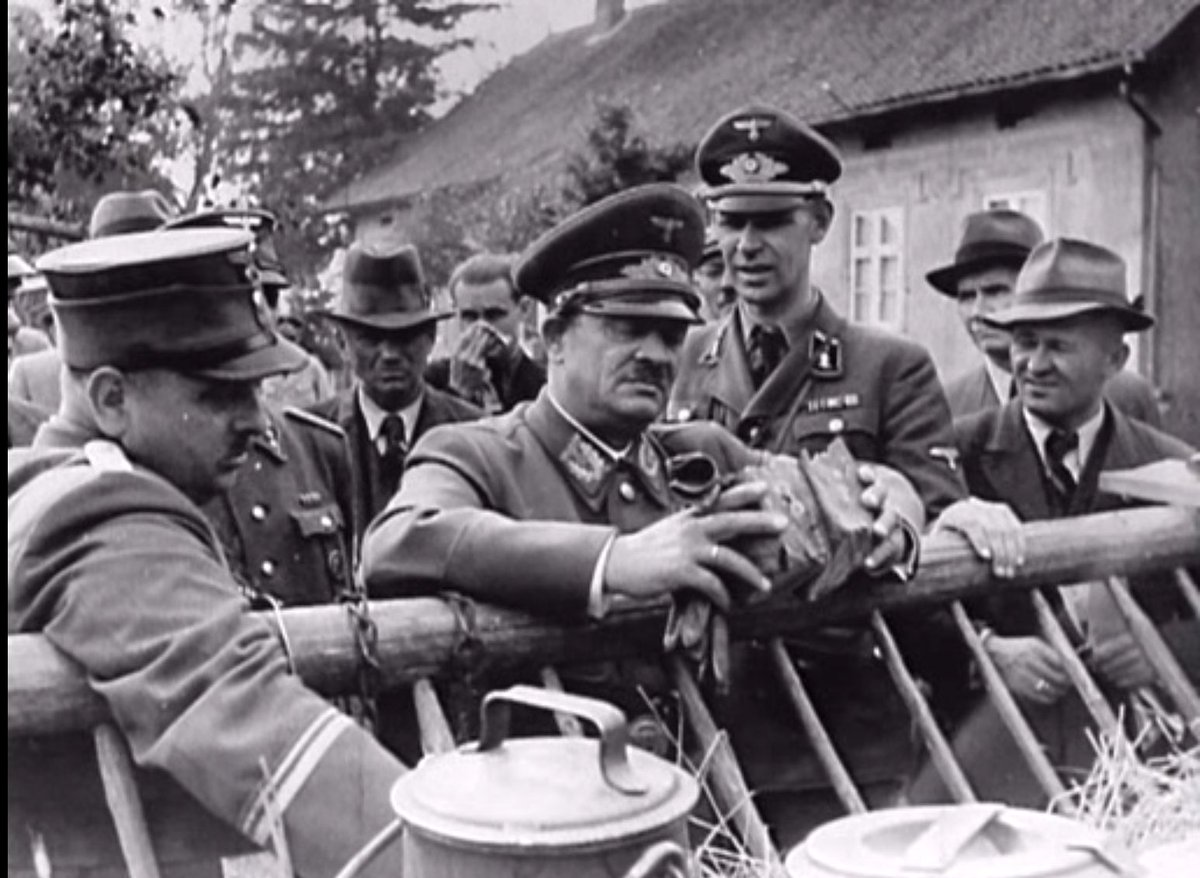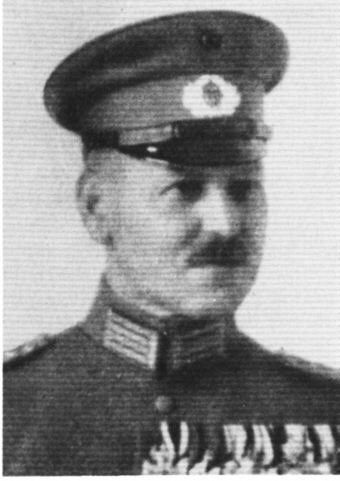
Nazi occupation of the Ukraine and the Holocaust. A summary thread in response to Putin’s destruction of the Ukraine archives.
#Ukraine #UkraineWillResist #UkraineRussiaWar
** Warning some sensitive content **
#Ukraine #UkraineWillResist #UkraineRussiaWar
** Warning some sensitive content **
https://twitter.com/joelw_762/status/1497874297083281410
The destruction of a national archive is the first stage to erasing Ukrainian identity, ethnic cleansing and the road to genocide.
We must stand up to Putin, reconstituting the archives digitally and restoring documents. This is a small contribution.
We must stand up to Putin, reconstituting the archives digitally and restoring documents. This is a small contribution.
22 June 1941 - German Armies invaded the Soviet Union, striking out towards Bialystok, Minsk, Riga, Kyiv, Smolensk, Moscow etc. The soldiers were committed to the infamous Barbarossa Directives - killing commissars, POWs and Jews.
Images: @USNatArchives

Images: @USNatArchives


In July 1941 - Hitler held a conference essentially to formalise the borders of the Greater German Reich and Hitler’s Colonial empire of Lebensraum. Behind the armies a caravan of carpetbaggers - the SS, Police, administrators, industrialists and much more.
Image: Birds of Prey
Image: Birds of Prey

Hitler gave Erich Koch, Gauleiter of East Prussia, the Reichskommissariat Ukraine (RKU) and Bezirk Bialystok, and Bialowieza forest.
Images: @BundesarchivD

Images: @BundesarchivD


Koch turned East Prussia into al fiefdom, a stage for his power games. In 1935 he hosted the Ostmesse. During one speech his SS chief, Erich von dem Bach-Zelewski caused a scandal by storming out. Koch was embarrassed and his relations with SS soured.
Image: HerkusMonte
Image: HerkusMonte

July 1941, Koch was in Göring’s train headquarters ‘Robinson’ stabled in Johannesberger Heide. He learned from Göring about the land grab. Luftwaffe generals watched as he danced around with a map in his hands.
Images: @HolocaustMuseum

Images: @HolocaustMuseum


Friedrich Jeckeln was SS chief in RKU. The German Army occupation military governor was General Kurt Eberhard. Together the planned the destruction of the Ukrainian Jewish community.
Images: PD

Images: PD


Battle of Kyiv - August-September 1941. The city was surrounded on 16 September. 10 days of heavy bombardment - the Red Army surrendered. Reichenau and Guderian were not so fast in their Blitzkrieg.
Images: @USNatArchives @BundesarchivD


Images: @USNatArchives @BundesarchivD



29-30 September 1941 - Babi Yar ravine - 3 days after the surrender, over 30,000 Jews were transported to the ravine and killed in mass shootings. 1 October 1941 - Red Army POWs were brought to the ravine to dig grave pits.
Image: @HolocaustMuseum
Image: @HolocaustMuseum

Meanwhile, to join East Prussia to RKU, Göring ordered the Bialowieza Forest pacified and cleared of Jews. There were mass deportations in preparation for incorporating Bezirk Bialystok into the Greater German Reich.
Images: PWB Map @BundesarchivD

Images: PWB Map @BundesarchivD


Mass killings increased across the entire Bezirk Bialystok and RKU region under Koch’s and Göring’s orders. Bialowieza was a priority for Koch because he wanted to hunt the wild game.
Images: PWB


Images: PWB



At the same time in the RKU, Friedrich Jekeln and Einsatzgruppe C began the mass extermination of all the Ukraine’s Jews. Jekeln tried to hasten measures with the ‘sardine packing’ method. There were more killings in Babi Yar raising numbers to 150,000.
Images: PD

Images: PD


Although Koch was able to hunt in Bialowieza, he was still not happy. Bach-Zelewski was SS chief and Koch wanted him gone. In 1942 Himmler swapped Hans-Adolph Prützmann with Friedrich Jeckeln, who became SS chief over RKU and Bezirk Bialystok.
Images: @BundesarchivD

Images: @BundesarchivD


Prützmann and Koch found a compromise. This particularly focused upon Hitler’s Bandenbekämmpfung (combating bandits) Directive of August 1942 that Prützmann was keen to prosecute against Ukrainian partisans. The insurgency mapped.
Image: Purnell//BBC//@BundesarchivD



Image: Purnell//BBC//@BundesarchivD




RKU began working and Nazi administrators moved in. Herbert Backe brought his pseudo-science of food to impose the hunger plan that was inter to impose starvation on the indigenous population in the east.
Images: @USNatArchives PWB @BundesarchivD



Images: @USNatArchives PWB @BundesarchivD




The starvation became locked into the national memory of Ukrainians. Nazi leaders felt vindicated themselves for avoiding the Great War hunger winters in Germany.
Images: BBC - War of the Century episode 2



Images: BBC - War of the Century episode 2




Koch’s lethargy and general tardiness meant the RKU turned into a basket case - chaos, corruption and cruelty. Very soon a dispute erupted between Koch and Alfred Rosenberg over the independence of the Ukraine. One official recalled how Koch abused Rosenberg.
Images: BBC as above

Images: BBC as above


Ukrainian partisan raids deep into German occupied territory caused serious problems. The Kopak raid was most devastating, trashing 4 German police regiments and ancillary units.
Image: Kovpak/People.ru

Image: Kovpak/People.ru


As the war turned against the Germans another Nazi arrived in the Ukraine. Fritz Sauckel was plenipotentiary for labour under Albert Speer. He forced 2.2 million Ukrainians into slave labour. Graves to dead slave labourers in Germany.
Images: @BundesarchivD PWB



Images: @BundesarchivD PWB




Finally the Red Army offensive forced the Germans out of the Ukraine and the RKU ceased in 1944. Koch had a last hunt in Bialowieza and then fled to Königsberg. He demanded protection from Göring and Luftwaffe formations concentrated. He then ordered the people to fight.
Koch ordered the people to fight, then fled - he emerged after the war in British captivity. Königsberg was captured and renamed Kaliningrad after Mikhail Kalinin. That city is in the headlines again in Putin’s war.
Image: PD
Image: PD

During the RKU, the Ukrainian people were devastated:
7 million dead, 1.6 million Jews murdered, 2.2 slave labourers, 700 cities damaged and 28,000 villages destroyed.
7 million dead, 1.6 million Jews murdered, 2.2 slave labourers, 700 cities damaged and 28,000 villages destroyed.
Hope this thread is of interest to people and helps generate thoughts about the importance of analogue archives. This thread might be of interest of: @yadvashem @wienerlibrary @HolocaustMuseum @UCL_Holocaust @HMD_UK @_BAHS_
• • •
Missing some Tweet in this thread? You can try to
force a refresh































